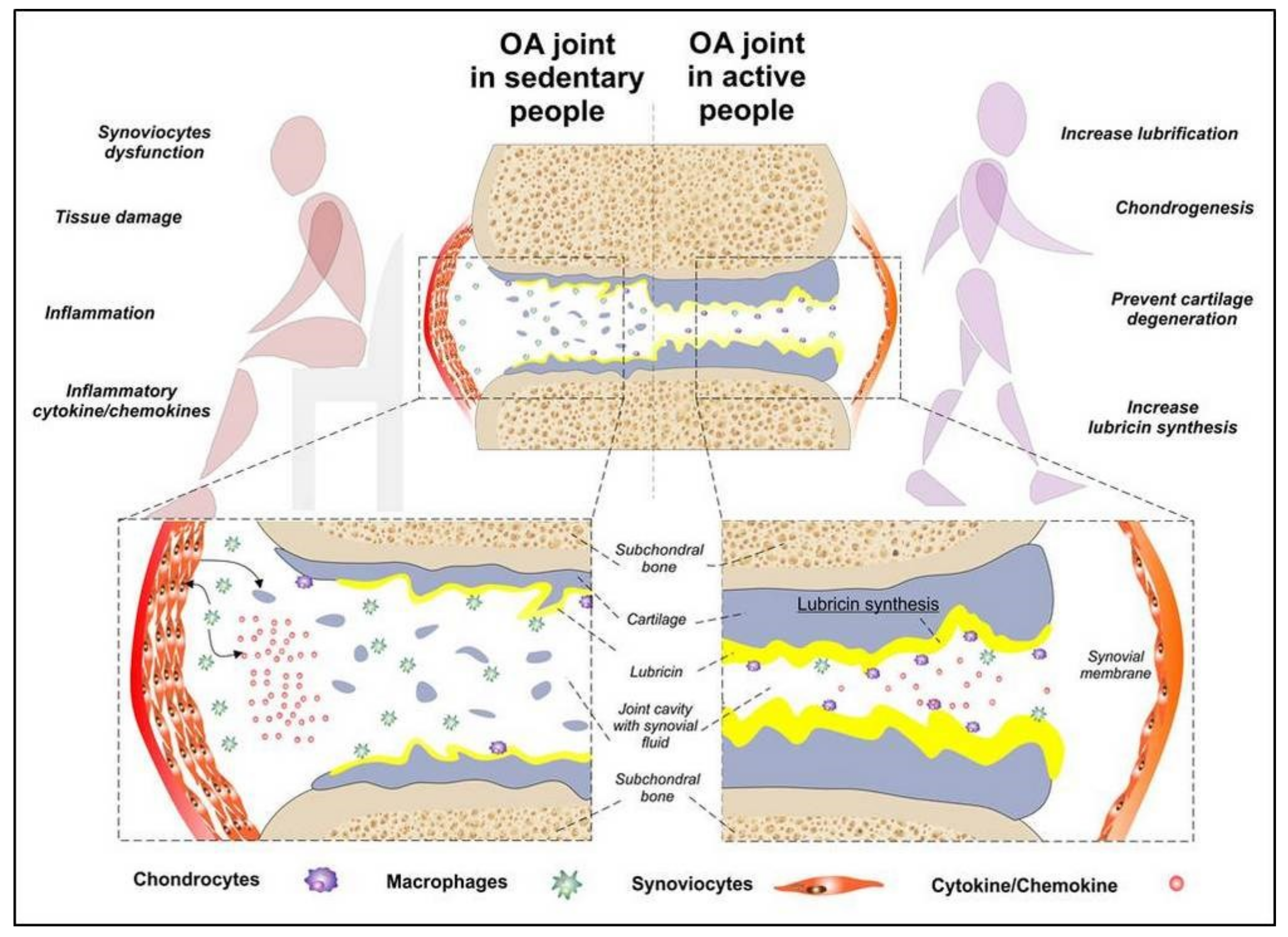

Synovitis is often associated with knee fluid effusion, suggesting that changes in the synovial fluid (SF) environment happen along with changes in the synovium. Thus, there is evidence that MΦs contribute to the OA pathogenesis. MΦs from OA synovium produce inflammatory and degradative mediators and ablation of synovial-resident MΦs reduces OA severity in a murine model. The main immune cells (leukocytes) present in the OA synovium are monocytes/macrophages (defined as a heterogeneous mixture of monocytes and macrophages, MΦs) typically found along the synovial lining layer. In fact, synovitis predicts OA progression and is associated with pain and cartilage degradation. Synovitis promotes an inflammatory environment associated with cartilage degradation. Osteoarthritis (OA) is increasingly considered a chronic, low-grade inflammatory disease with involvement of synovial inflammation (synovitis). Knee OA SF MΦ subsets could serve as knee OA function biomarkers and as targets of novel therapeutics. SF MΦ subsets are associated with knee OA PROMs and display an activated phenotype, which may lead to modulation of CD4 + T cell activation.

Correlation between OA SF MΦ subsets and activated CD4 + T cell subsets suggests modulation of CD4 + T cell activation by MΦs. All SF MΦs displayed high levels of HLA-DR, suggesting an activated phenotype. Interestingly, the SF CD14 +CD16 +-MΦ subset ratio correlated with SF chemokine (C-C motif) ligand 2 (CCL2) levels but not with levels of sCD163 or sCD14 we found no association between PROMs and either SF CCL2, sCD163, sCD14 or CX3CL1 (which was below detection levels). Importantly, MΦ subset ratios correlated with PROMs, specially stiffness, function and quality of life. Within these, the double-positive CD14 +CD16 +-MΦ subset is enriched in knee OA SF compared to the circulation. Pearson correlation was calculated to determine correlation between MΦ subsets, T cells and soluble factors. Linear models, adjusted for sex, age and body mass index, were used to determine associations between SF MΦs and soluble factors with PROMs ( N = 83). Soluble MΦ receptors and chemokine (sCD14, sCD163, CCL2, CX3CL1) levels were detected in SF using immunoassays. In this cohort study, synovial fluid leukocytes (SFLs, N = 86) and peripheral blood mononuclear cells ( n = 53) from patients with knee OA were characterized. We hypothesized that levels of synovial fluid (SF) MΦ subsets are indicative of joint function and quality of life in patients with OA, and can therefore serve as biomarkers and therapeutic targets for OA. However, different subsets of OA MΦs have not been investigated in detail, especially in terms of their relationship with patient-reported outcome measures (PROMs). Specifically, monocytes/macrophages (MΦs) are known to be abundantly present in OA joints and involved in OA progression. Chronic, low-grade inflammation of the synovium (synovitis) is a hallmark of osteoarthritis (OA), thus understanding of OA immunobiology, mediated by immune effectors, is of importance.


 0 kommentar(er)
0 kommentar(er)
